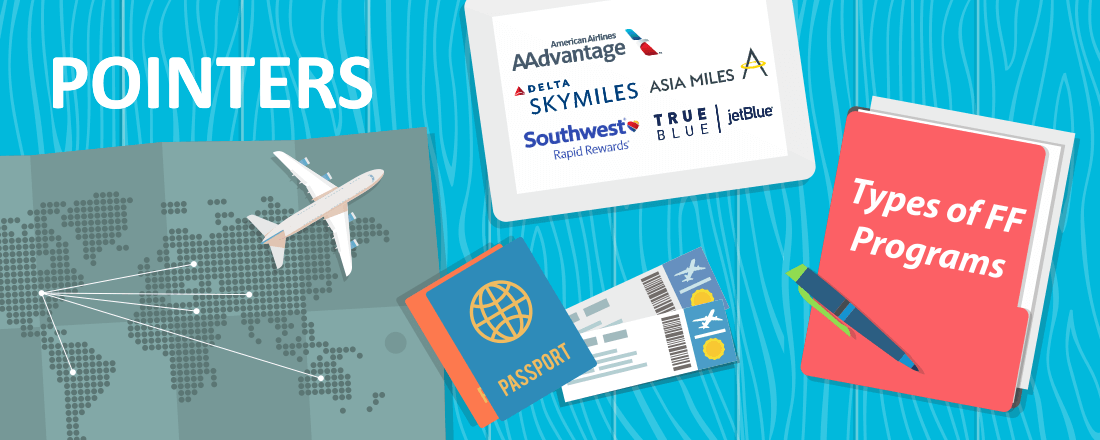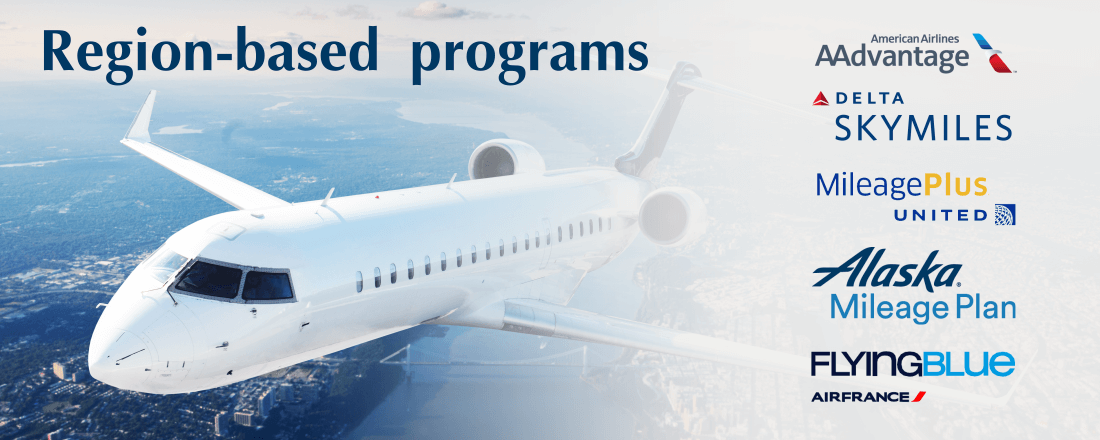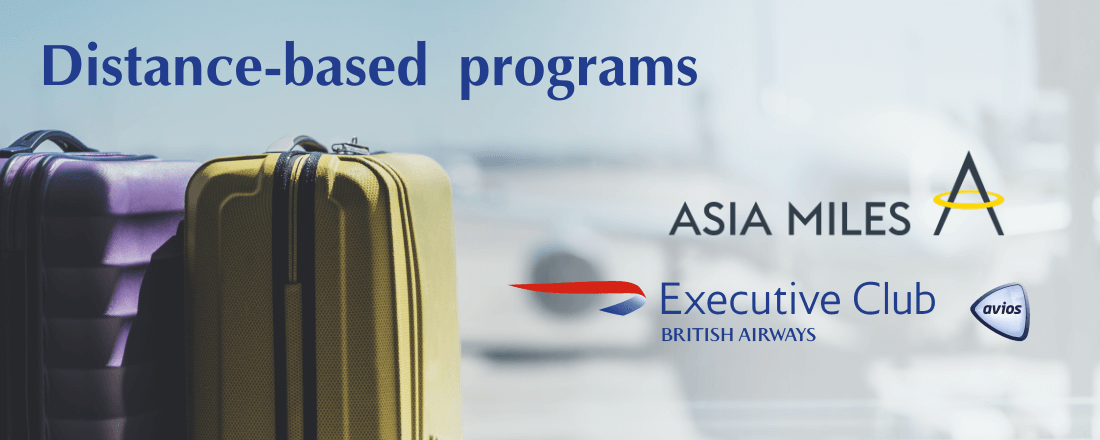
Frequent flyer programs have come a long way since American Airlines introduced AAdvantage in 1981. The vast majority of world airlines have frequent flyer programs, and while they differ widely, each of their redemption schemes is based on one of the three underlying principles: region-based, distance-based or revenue-based.
Since every frequent flyer program is different, it makes good sense to collect miles from different programs to make sure you derive the best values from them. A program that might be good for a trip to Paris, may not be the best value for visiting your in-laws.
And even if you have’t got miles in a particular program you want to use, remember that’s where transferable points come into play. With points from American Express Membership Rewards, Chase Ultimate Rewards and Citi ThankYou, you have access to dozens of airline programs so you can choose which currency to use for your particular goal.
Region-Based Programs
Region-based is the most common type of program for domestic airlines. A region program doesn’t take into account either the actual distance or cost of a ticket. These programs can be a source of both frequent flyer value and redemption duds.
When a transcontinental flight between New York and Los Angeles costs the same miles as the flight between Philadelphia and Washington, DC, one should be careful to use miles to reap the best value. Carriers that allow redemptions by region include American AAdvantage, Delta SkyMiles, United MileagePlus, Alaska Mileage Plan and Air France Flying Blue.
Distance-Based Programs
As the name suggests, mile redemptions in distance-based programs are based on the actual flying distance between the departure and destination points. This is a relatively straightforward and easy-to-understand system, although the underlying principles, particular rules, and actual redemption values that customers can derive vary greatly between the airlines. Airlines that have distance-based programs include British Airways Avios and Cathay Pacific Asia Miles.
Revenue-Based Programs
Revenue-based programs generally link their award redemption rates to the cost of a ticket, which is why it’s probably the easiest kind of program to understand. The way they function, however, differs from one program to another, so there are still possibilities for somewhat outsized redemptions on airlines like Southwest Rapid Rewards and JetBlue TrueBlue, which have revenue-based redemptions.
What You Need to Know About Region-Based Programs
You may think that region-based frequent flyer programs are very similar , but there are considerable differences. Here are a few examples. Different airline programs define regions differently.

Region Definitions
For example, most programs separate South America into two regions, Northern South America and Southern South America (although American calls the latter South America Region 2.)
Alaska, however, doesn’t divide South America. It charges you the same amount of miles for traveling anywhere on the continent.
Those airlines that do separate the North from the South, place Brazil squarely into the South. However, there is a small exception: American puts the northern Brazilian city of Manaus into the North, thus potentially making traveling to Brazil much less expensive.
These are by no means the only discrepancies between different frequent flyer programs. According to American, Russia is in Europe – the whole country from its western frontiers to the Bering Strait. That opens up an incredibly cheap possibility of flying anywhere in Russia on American’s partner S7 for just 22,500 – 30,000 miles. Technically speaking, United also puts Russia in one region, but it doesn’t have any partners there, so the point is moot.
And per Air France’s Flying Blue program, Israel, Morocco, and Tunisia are in Europe 3, meaning you can fly there for only 30,000 miles as opposed to 40,000 – 42,500 miles.
What You Need to Know About Distance-Based Programs
Theoretically, distance-based programs should be easy to use. All you need to know is the distance between your departure and destination city. In reality, however, there are nuances. British Airways Executive Club calculates the redemption rate per flying segment. What it means is that if you fly between New York and Los Angeles on the British Airways partner via Chicago, you will pay 17,500 Avios for two segments: New York – Chicago and Chicago – Los Angeles. Fly nonstop and you will pay less – 12,500 Avios. Obviously, British Airways Avios is an excellent tool to use on nonstop short and ultra-short hauls.

Cathay Pacific Asia Miles doesn’t work like that despite also being a distance-based program. Cathay Pacific calculates mileage from the departure to destination points regardless of how many segments take you there. That and the chart composition makes Cathay Pacific Asia Miles a program of choice for long-haul and some ultra-long-haul redemptions.
What You Need to Know About Revenue-Based Programs
Revenue-based award programs are usually the easiest to use since the mileage cost for an award flight is directly tied to the cost of the ticket. That, however, doesn’t mean that all award tickets are equal. While there is a general correlation between the fare and the award cost there are some inconsistencies that you can use to your advantage.
For example, Southwest Rapid Rewards offers several options to redeem points. Do yourself a favor and redeem them only for “Wanna Get Away” fares, which means booking early. Since Southwest doesn’t charge you any cancelation fees even on points bookings, you can always book early and get the points refunded if you change your mind.
And since the cost of awards fluctuates depending on the amount of taxes you pay, you will always get a better value on short and cheap fares. Try to make sure your redemption value is not less than 1.5 cents per point, but sometimes you’ll get even more.

The JetBlue TrueBlue program also ties the redemption cost to the ticket fare, but finding the best bang for your TrueBlue point is a little more difficult. Sometimes, JetBlue can get you a truly outsized value over 2 cents per point, but in most cases you should be able to get close to 1.5-1.8 cents per point. The general rule is simple here as well. The best value usually comes with short-haul cheap flights, and the worst value usually comes with Mint, JetBlue’s first class seat. So, try to resist the temptation of booking Mint with points. You’ll be better off paying cash for it.
Free Stopovers
Some programs allow free stopovers that you can use on the way to or from your final destination. They are offered by some region- and distance-based programs, but not revenue-based ones.
Being able to use free stopovers when they’re offered by your airline frequent flyer program is a terrific benefit that allows you to see more places for the same number of miles.
Here’s the rundown on which programs allow stopovers:
American, Delta, and Air France don’t allow free stopovers.
United allows them within one region (Excursionist Perk) on roundtrip international travel.
Alaska allows a free stopover even domestically and on one-way flights.
Cathay Pacific allows up to five free stopovers on one award.
If you fly on an airline that allows free stopovers and have some extra time, use them to see more and spend less miles.





